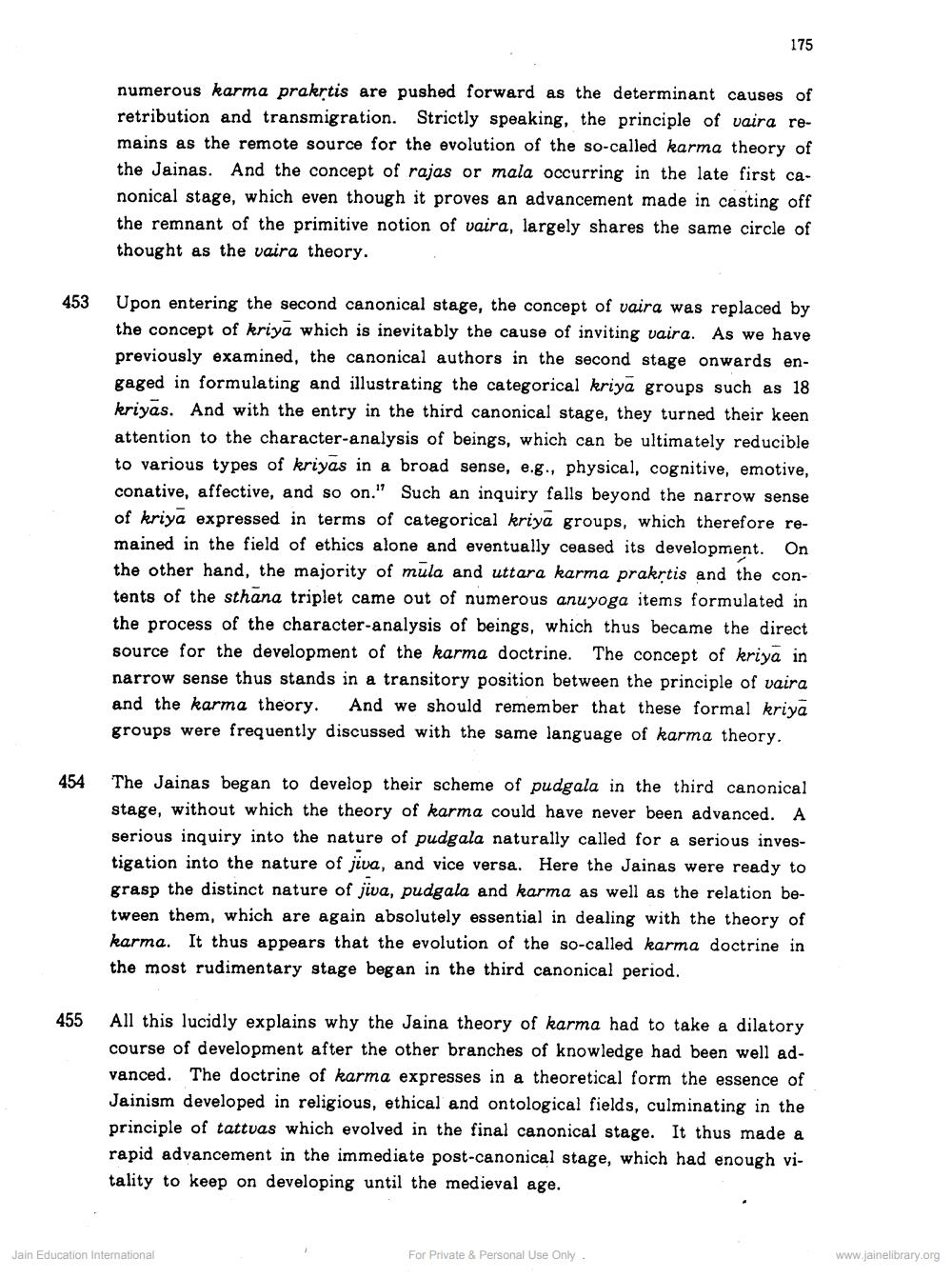________________
175
numerous karma prakrtis are pushed forward as the determinant causes of retribution and transmigration. Strictly speaking, the principle of vaira remains as the remote source for the evolution of the so-called karma theory of the Jainas. And the concept of rajas or mala occurring in the late first canonical stage, which even though it proves an advancement made in casting off the remnant of the primitive notion of vaira, largely shares the same circle of thought as the vaira theory.
453
Upon entering the second canonical stage, the concept of vaira was replaced by the concept of kriya which is inevitably the cause of inviting vaira. As we have previously examined, the canonical authors in the second stage onwards engaged in formulating and illustrating the categorical kriya groups such as 18 kriyas. And with the entry in the third canonical stage, they turned their keen attention to the character-analysis of beings, which can be ultimately reducible to various types of kriyas in a broad sense, e.g., physical, cognitive, emotive, conative, affective, and so on." Such an inquiry falls beyond the narrow sense of kriya expressed in terms of categorical kriya groups, which therefore remained in the field of ethics alone and eventually ceased its development. On the other hand, the majority of mula and uttara karma prakrtis and the contents of the sthana triplet came out of numerous anuyoga items formulated in the process of the character-analysis of beings, which thus became the direct source for the development of the karma doctrine. The concept of kriya in narrow sense thus stands in a transitory position between the principle of vaira and the karma theory. And we should remember that these formal kriya groups were frequently discussed with the same language of karma theory.
454
The Jainas began to develop their scheme of pudgala in the third canonical stage, without which the theory of karma could have never been advanced. A serious inquiry into the nature of pudgala naturally called for a serious investigation into the nature of jiva, and vice versa. Here the Jainas were ready to grasp the distinct nature of jiva, pudgala and karma as well as the relation between them, which are again absolutely essential in dealing with the theory of karma. It thus appears that the evolution of the so-called karma doctrine in the most rudimentary stage began in the third canonical period.
e of jiva, en pudgala natud have neve
455
All this lucidly explains why the Jaina theory of karma had to take a dilatory course of development after the other branches of knowledge had been well advanced. The doctrine of karma expresses in a theoretical form the essence of Jainism developed in religious, ethical and ontological fields, culminating in the principle of tattvas which evolved in the final canonical stage. It thus made a rapid advancement in the immediate post-canonical stage, which had enough vitality to keep on developing until the medieval age.
Jain Education International
For Private & Personal use only.
www.jainelibrary.org




